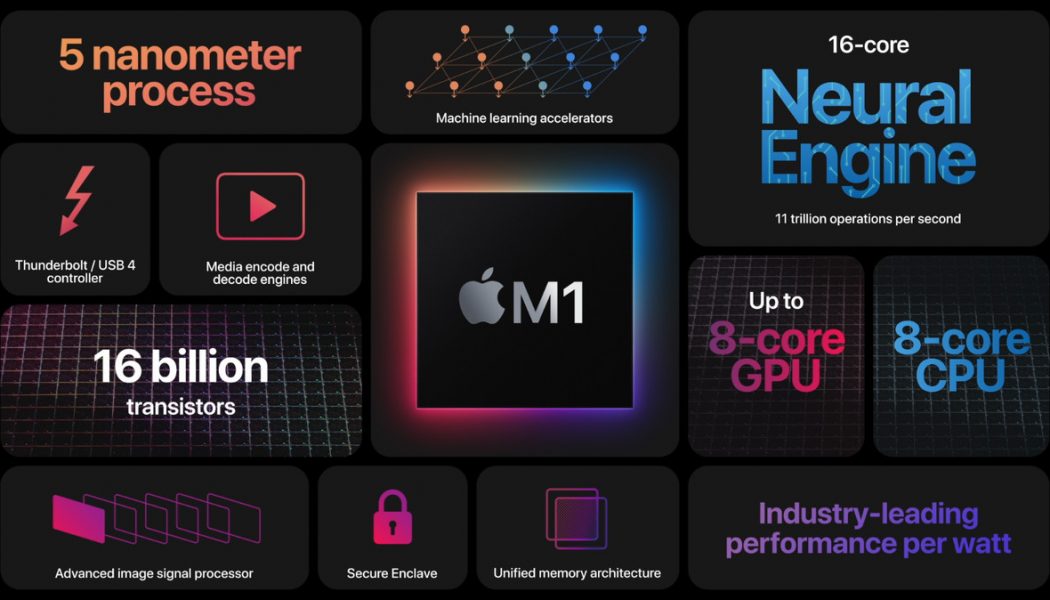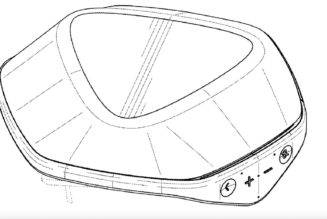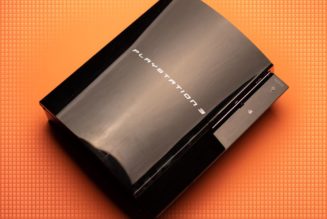Apple just wrapped up its “One More Thing” hardware live stream, where it announced new versions of the MacBook Air, the 13-inch MacBook Pro, and the Mac mini, each with its newly announced, promising M1 silicon. Apple first detailed its transition from Intel to its own processors earlier this year — but this event was all about diving deep into what that reality now looks like and when you’ll be able to get your hands on a computer featuring the just-announced M1 chip.
If you missed out on the stream, I highly recommend taking the purist route of rewatching it alongside our live blog coverage to get the moment-to-moment commentary on each announcement. Otherwise, if you just want the headlines and major details, that’s what I’m here for! Here are all of the biggest announcements.
:no_upscale()/cdn.vox-cdn.com/uploads/chorus_asset/file/22026920/VO5Bd6EiMQ.png)
Apple is making the jump to a 5nm chip called M1. It’s comprised of an octa-core processor, which Apple says contains the fastest CPU cores of any processor ever made, and the best performance per watt of any CPU in its class on the market.
The M1 also has an eight-core integrated graphics processing unit, and Apple again touts that it’s able to provide better performance than the “latest PC laptop chip” while demanding less power.
:no_upscale()/cdn.vox-cdn.com/uploads/chorus_asset/file/22027103/Screen_Shot_2020_11_10_at_1.24.14_PM.png)
Apple launched the new $999 MacBook Air with M1, one of the first macOS devices to feature its new chip. The overall design looks the same as the previous model, but the company says that the M1 enables better battery performance (up to 18 hours of video playback) and better general performance with intensive apps like Adobe Lightroom as well as games that tap into the integrated graphics. Apple also says that the M1’s flash controller makes accessing storage for read / write faster than before.
The MacBook Air is available for preorder today and will release next week.
:no_upscale()/cdn.vox-cdn.com/uploads/chorus_asset/file/22026975/Screen_Shot_2020_11_10_at_1.34.43_PM.png)
The new M1 processor is heading to the Mac mini desktop. This makes sense, given that Apple’s developer kit for the new silicon was in this Mac mini chassis. Apple says the M1-equipped Mac mini boasts three times the performance of the previous iteration that housed a quad-core CPU.
The Mac mini’s rear I/O panel supports USB 4 and Thunderbolt and can connect to the Pro Display XDR with 6K resolution. It will start at $699, and you can tweak it with up to 16GB of RAM and up to 2TB of internal storage.
Like the MacBook Air, the mini is available to order now, with the release coming next week.
:no_upscale()/cdn.vox-cdn.com/uploads/chorus_asset/file/22026982/Screen_Shot_2020_11_10_at_1.40.36_PM.png)
Apple’s 13-inch MacBook Pro is the next macOS device to get the M1 chip. It features the longest battery life of any Mac, according to Apple, with up to 20 hours of video playback. The M1’s camera ISP will enhance the image during video calls, as it will on the MacBook Air that was also announced today. Apple says its Thunderbolt USB 4 ports support 6K resolution with the Pro Display XDR. It starts at $1,299 and is available for preorder now.
:no_upscale()/cdn.vox-cdn.com/uploads/chorus_asset/file/22026987/lcimg_9d6189ab_7a1e_49a0_ac48_bbfc3190f5c2.jpg)
The new macOS Big Sur operating system upgrade was made to take advantage of the M1 chip, which could explain why it has taken a while for the software to release. Apple demoed how quickly a laptop that looked like a MacBook Pro could power up when opened as well as how swiftly apps can load.
The new OS upgrade launches this Thursday, November 12th.










